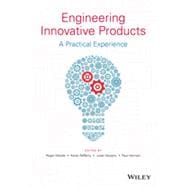—Steve Orr, Director, Northern Ireland Science Park CONNECT program which looks to accelerate the growth of knowledge-based companies in Northern Ireland
Engineering Innovative Products: A Practical Experience is a pioneering book that will be of key use to senior undergraduate and graduate engineering students who are being encouraged to explore innovation and commercialization as part of their courses. The book will teach the essential skills of entrepreneurship and address the fundamental requirements needed to establish a successful technology company.
As well as providing the crucial background and insights enabling students to identify a key market, it also offers a highly practical guide to undertaking genuine product validation and producing a feasibility study, as well as providing vital insights into the challenges and demands in forming a technology based company.
Key features:
- Outlines how to develop and grow an engineering solution which has market potential and covers key business aspects of giving the perfect pitch, sales and marketing, protection of ideas and finance, to offer a complete and practical guide to commercializing ideas.
- Provides vital insight into the design and innovation processes within engineering and the challenges and pitfalls in translating good ideas into great products.
- Features contributions from leading experts in marketing, finance, company formation, sales and intellectual protection which provides details of the challenges faced by innovators when commercializing ideas.
- Includes Ccase studies from engineering students who give insights into how they have successfully developed their own ideas into companies.








